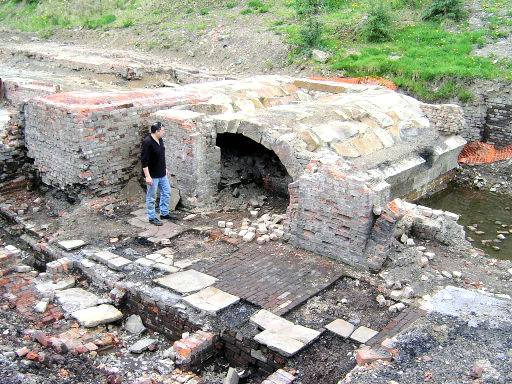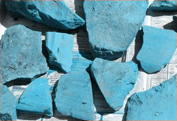|
On Saturday Eric and I attended the second meeting on the newly formed Federation. First on the agenda was future of the Universityís Archaeological Unit. Breakdown of talks with a 3rd. party means the Unit will now close with a loss of 13 staff members. Formal announcement is on Tuesday and closure will occur at the end of July. Mike Nevellís team will be asked to take voluntary severance or reallocate within the University. No plans have yet been agreed as to what will happen to the huge archive the Unit has built up over the years. Also left in doubt are the 14 community projects around the region which are currently supported by the unit. There was general dismay expressed at meeting at the loss of this wealth of expertise and it was agreed that a formal complaint would be lodged with the University.
Dig Greater Manchester
This project, which was to be run by the UMAU, is still set to go ahead (despite the above news). It has attracted an award of £0.5m Lottery money and will be matched by a further £0.5m from local authorities. There is a list of possible sites currently being compiled which will be circulated to all societies. This will enable suitable ones to be selected in each region. The project will run for 4 to 5 years and is aimed at trying to get regional communities involved in their local heritage.
Dicconson Mill

Excavations were completed here towards the end of last year by the UMAU - after planning was approved for Ancer Homes to build a small housing estate. This large complex, located off Dicconson Lane in Apull (at the top end of Borsdane Wood), dated from the 18th century and in its heyday in the 19th century, was a combined cotton spinning and weaving mill. However it closed in the 1930ís and (as generally happens) ended its life as industrial units. Evidence on the ground show that the mill was originally water powered and may have started life as the medieval corn mill for the nearby moated site of Gidlow Hall. An excavation report has been compiled by Richard Gregory of the UMAU and is awaiting publication.
Simple Beginnings
This is the title of an exhibition at Bolton Museum looking at the ever fascinating story of evolution as part of the national Darwin200 celebrations. It will start on Saturday 13th June and will continue till 7th November. During this time there will be a series of free evening and lunchtime talks exploring aspects of Darwinís life and his revolutionary theory. For more information see me at our next meeting or log-on to www.boltonmuseums.org.uk
Lathom Project
Following the award of £49,900 from the Lottery, this project will begin in late spring and last for two years. It will start with some geophysical surveys, and be followed later in the year with trial trenching. The project will be led by professional archaeologists, who will provide valuable training opportunities for volunteers and members of the public. This is an important site originating as the early medieval stronghold of the de Lathom family, but later became the seat of the Earls of Derby. Lathom went on to become the 'Northern Court' of Tudor and Stuart England. (Application forms will be available at the meeting.)
Rectory Update
As announced at last months meeting, permission has now been granted for us to proceed on this site. Excavations will start in the next few weeks but in the meantime work will continue with surveying and preparation. Our first excavation will be in the area on the left side of the entrance behind the gatehouse. The initial target will be the old Frog Lane which disappeared in 1875 when the grounds of the Rectory were extended and the Hall rebuilt. We are also hoping to discover earlier features as the Rectory extension will have almost certainly protected this area from subsequent development. If you are interested in taking part then contact myself or Eric at the meeting.
Next Meeting
Wednesday 6th May - District Scout HQ (Baden Powell Centre) in Greenough Street as usual, starting at 7.30 pm. This month we have Annie Worsley from Edgehill University near Ormskirk. Annie is a Paleoenvironmentalist and will be telling us about the extraordinary evidence for Prehistoric activity on Formby Beach (discovered a few years ago by Gordon Roberts). Annie has also agreed to look at an organic sample we took from our Roman road site at Moss Hall. The sample came from a depth of 50cm and shows that despite the industrial activity in the area, the early surface still survives and therefore probably the Roman road as well. A date for this layer will gives us a vital clue as to what level we should be looking.
Hope to see you there B.A.
|



